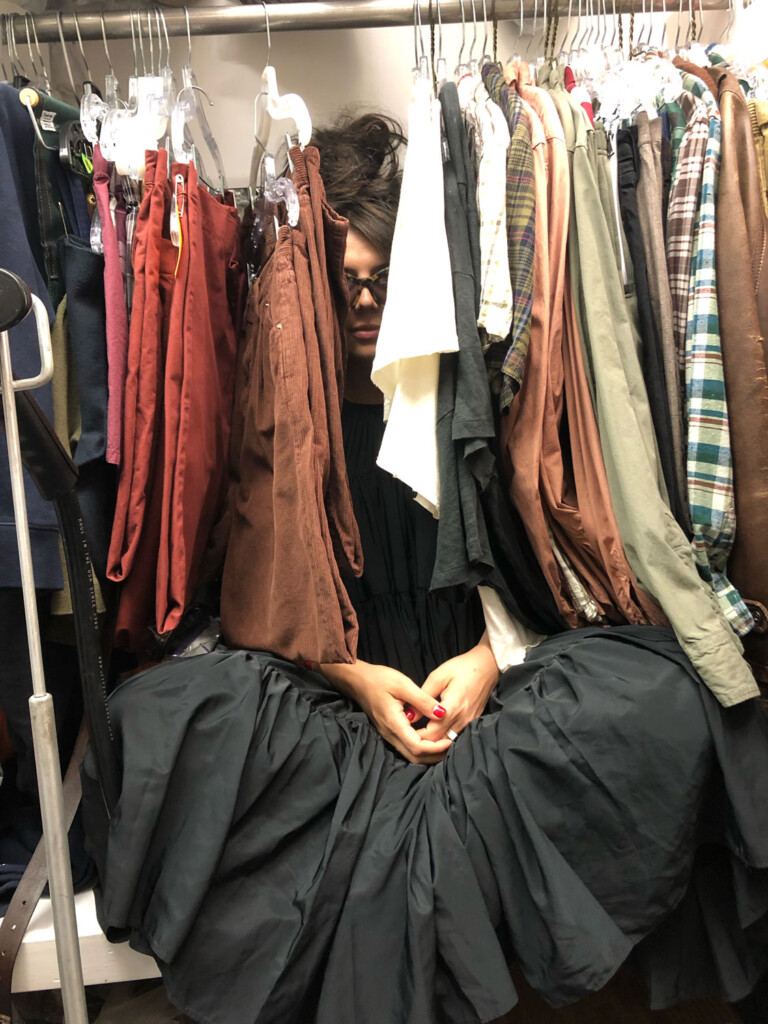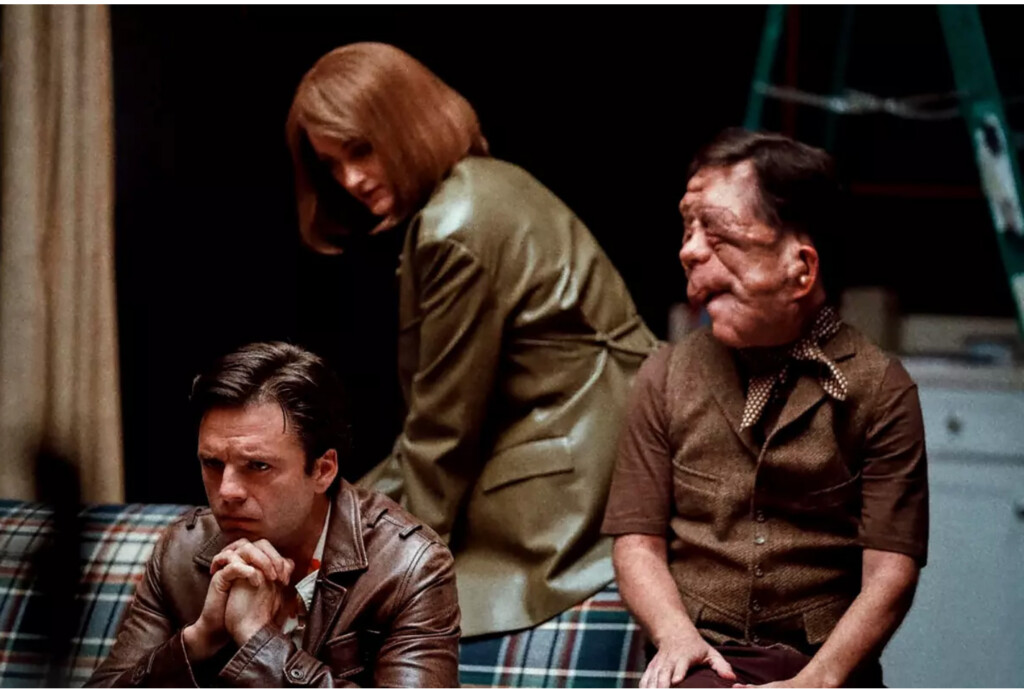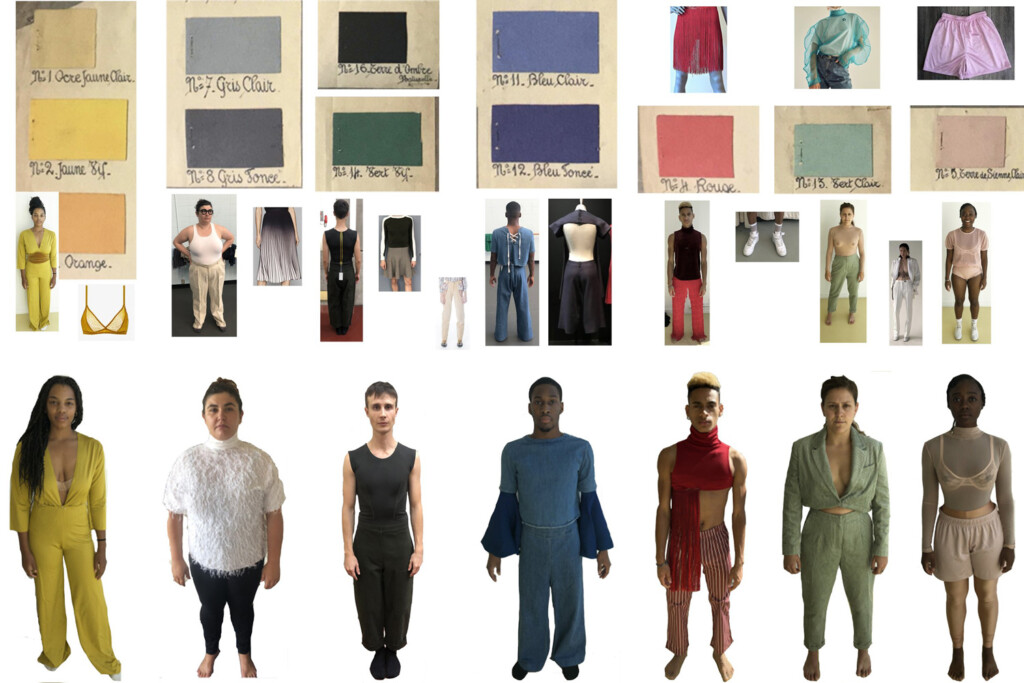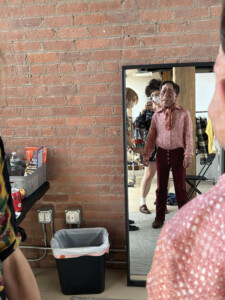Stacey Berman had been working as a costume designer for films when Covid struck. While the industry hit an enforced pause, her partner suggested that she read the Harvard Design School Guide to Shopping (2002), edited by Rem Koolhaas. Intrigued by the multidisciplinary research, she decided to apply to the Harvard Graduate School of Design (GSD) as a Master in Design Studies (MDes) student in the Narratives domain, graduating in 2023.

As a costume designer, Berman considers herself in the business of worldbuilding, a term popularized in the science fiction/fantasy writing community. Berman defines it as “setting up rules for fictional universes that reflect variable realities.” She wanted to translate the concept of worldbuilding from the more abstract realm of writing into the built environment. During her time at the GSD, she valued having the chance to work with colleagues in other disciplines, particularly architecture. Often, they approached situations from different angles. “I instinctively think first about the person in the environment,” she said, “whereas many of my peers think about the environment first, followed by the person.”
Berman’s costumes can be seen in the film A Different Man, currently in theaters. It stars Sebastian Stan as a man with a disfiguring facial condition who, after undergoing experimental surgery to drastically change his appearance, becomes involved in a play based on his life. Shooting for the film took place in the summer between the two academic years Berman spent at the GSD.
The project is her third collaboration with director Aaron Schimberg; Berman notes that they share the same person-first approach to their work. “In one draft of A Different Man, Aaron wrote 60-something named characters,” Berman explained. “There are always a few lead characters in a script, but there’s rarely a chorus of nuanced people ambling down the street beside them.”
Many of Schimberg’s projects, which include Go Down Death (2010) and Chained for Life (2017), involve nested frameworks: “movies within movies, time periods collapsing between eras, a theatrical production about events that previously unfolded on film—all of which require design that can accommodate the slipperiness between these worlds.” Berman noted how the close reading of critical theory in the Narratives domain informed her approach to the nuances of Schimberg’s work. In particular, she cited her experience working with Erika Naginski, Robert P. Hubbard Professor of Architectural History at the GSD, and former Open Project instructor Elisa Silva, who helped her develop her thinking on “how we position ourselves when we frame questions, research and work.”

Along with the makeup that drastically altered Stan’s face, costumes were another vehicle Schimberg emphasized to explore how appearance relates to performance. Post-treatment, Stan’s character Edward reinvents himself as Guy, who aspires to be an actor. Berman explains, “[W]hen Edward is dressing as Edward, the clothing he wears feels like clothing and not costume – i.e., it’s not notably performative. But when he starts dressing as Guy, we want to see the slippage between these characters and understand that he’s using clothing as a costume, to project to the world and himself that he’s an actor.” Thus, Edward-as-Guy—in the tradition of so many people looking to copy a celebrity look or a social media microtrend—has a style made up of imitation and tropes. “First, we dressed him as an archetypal Juilliard alum, in an all-black outfit with brand new Converse shoes. Then, he moves through dressing like James Dean, in white tees with rolled sleeves, and at times a rusty orange ’40s-style coat that hints at classic Hollywood. He also wears a vintage brown leather jacket that we called ‘Al Pacino,’ but the internet thinks is a reference to Tyler Durden in Fight Club.”
Berman’s body of work encompasses a wide variety of genres. In addition to her collaborations with Schimberg, her recent films include Brittany Runs a Marathon, winner of the Audience Drama Award at Sundance in 2019, and The Miseducation of Cameron Post, starring Chloë Grace Moretz, which won the Grand Jury Prize the previous year. She has designed costumes worn in music videos for Fall Out Boy and Jenny Lewis.

Berman also works closely with with experimental theater groups and performance artists. She has enjoyed a long-term collaboration with Gerard & Kelly, former GSD design critics in architecture. Their project E for Eileen will screen on FranceTV starting in 2025, and a new work, Saints at a Disco, is currently in the pre-production stages.
Amid this packed schedule, Berman creates work on her own, including a project called Psychic Mending, which she initiated last January at SomoS Arts in Berlin. She is also developing a project about fitting rooms that stems directly from work that she started at the GSD and for which she won the MDes Research & Development Award, given annually to one student in each of the MDes program’s four domains.

Berman notes that the many aspects that make up her career aren’t that different from each other, or even from the way we operate in real life. Even getting dressed ourselves is a small act of worldbuilding. “In our daily lives when we try on a piece of clothing, we ask ourselves, am I this person? And when we are making a film or performance and we are in a fitting, it’s this same question: is this the character?” Berman frequently works on costume designs, especially for performance artists, where a character is closely linked to the person in the role. “The murkiness between am I this person and is this the character opens up myriad questions of identity, self-perception and representation,” she said. “It doesn’t matter how far apart they may seem, there’s some facet of self that carries to the character. You can’t erase it.”